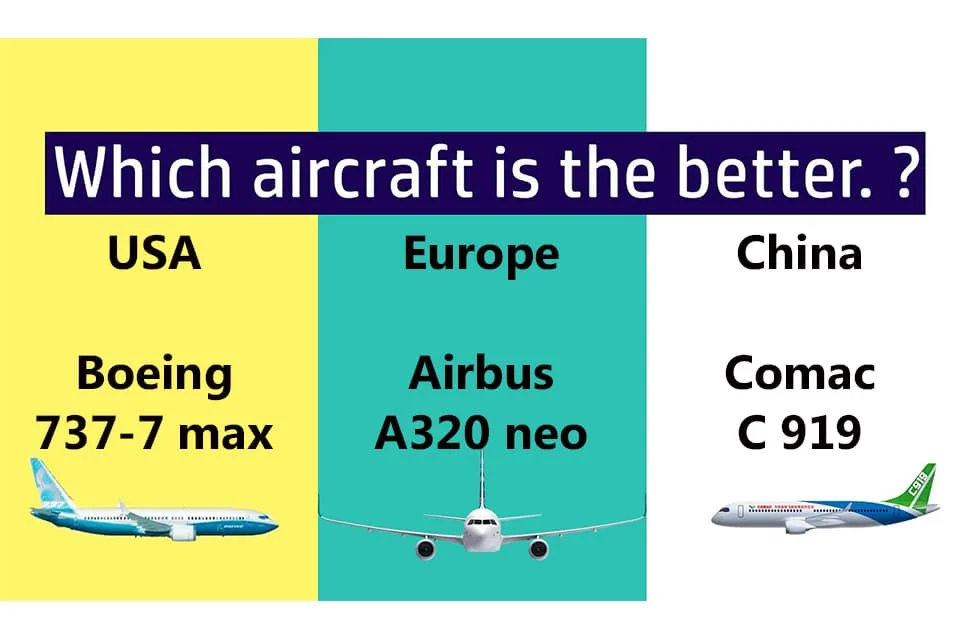Aircraft comparison
Comparison between Comac C919 and A320 aircraft

The COMAC C919 and the Airbus A320 represent two significant players in the narrow-body commercial aircraft market, each reflecting its manufacturer’s vision for the future of aviation.
The C919, developed by the Chinese aerospace manufacturer COMAC, aims to challenge established Western dominance with its advanced technology and cost-effective design. In contrast, the Airbus A320, a stalwart of global aviation for decades, continues to set benchmarks for efficiency, safety, and passenger comfort.
This comparison explores the key differences and similarities between these two aircraft, highlighting their design philosophies, performance metrics, and market implications.
How the Comac C919 similar from the A320 and B737 Max:Click here
The COMAC C919, predominantly built using aluminum alloys, is equipped with CFM International LEAP turbofan engines. It has the capacity to accommodate between 156 and 168 passengers in its standard configuration.
This twin-engine jet features a six-abreast economy cabin layout. Initially, it offered options for either CFM56 or IAE V2500 turbofan engines, though the CFM56/PW6000 combination was exclusively used for the A318 model. It can accommodate 195 passengers.
COMAC C919 vs. Airbus A320: A Comparative Overview
Length: The C919 measures 38.9 meters (127.6 feet) in length, slightly longer than the A320, which is 37.57 meters (123 feet 3 inches) long. This extra length provides a marginally larger cabin for the C919.
Wingspan: Both aircraft share the same wingspan of 35.8 meters (117.5 feet), indicating similar aerodynamic properties and potential for comparable fuel efficiency and performance.
Height: The C919 stands at 11.95 meters (39.2 feet) in height, surpassing the A320’s height of 11.76 meters (38 feet 7 inches). This difference is relatively minor but may impact cabin space and cargo hold configuration.
Aircraft comparisons between the comac C919 and B737 max 8:Click here
Weight: The COMAC C919 has a maximum takeoff weight of 42,100 kilograms (92,815 pounds), slightly less than the A320’s 42.6 tonnes (93,900 pounds). The A320’s marginally higher weight suggests it may be able to handle slightly more payload or fuel.
Range: The C919 offers a range of 4,630 kilometers (2,500 nautical miles), which is shorter compared to the A320’s range of 6,112 kilometers (3,300 nautical miles). This extended range of the A320 makes it better suited for longer routes and provides airlines with more operational flexibility.
Nearly twice as much as the $50 million that analysts predicted, comac c919 price is roughly $91 million. That is comparable to the cost of the Boeing 737-800 and the Airbus A320neo, which, as of 2021, are estimated to be $106 million and $111 million, respectively.









